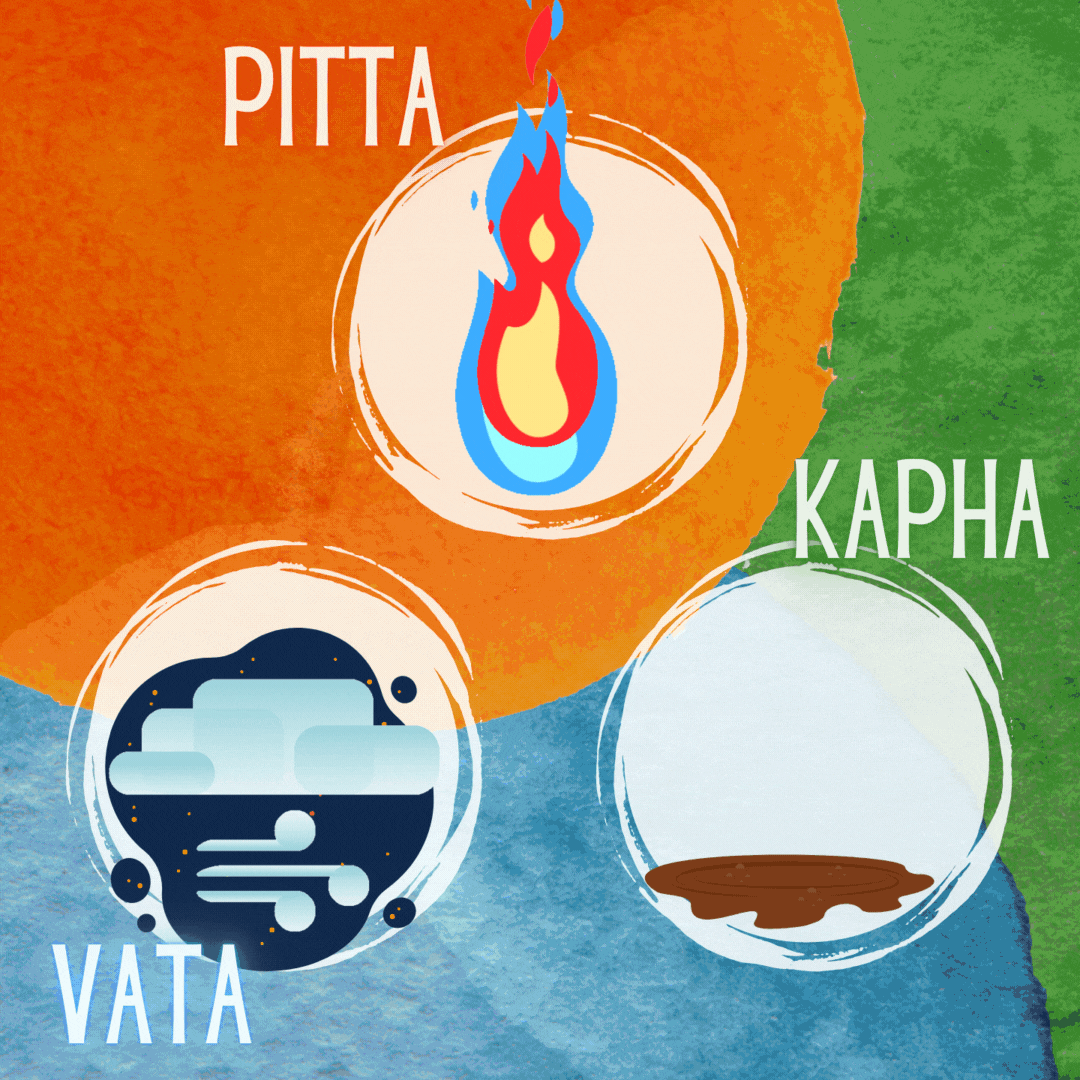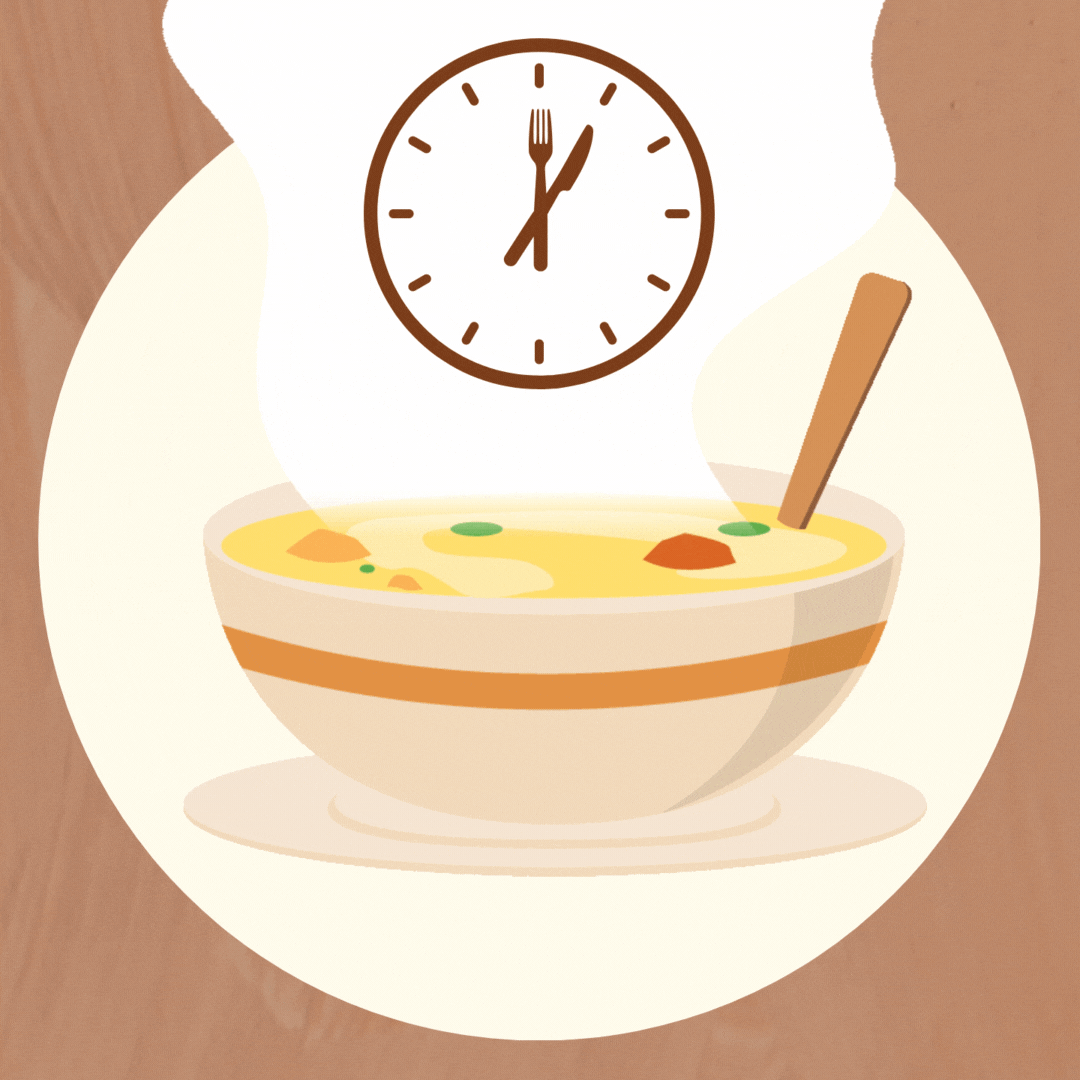
Ever had a grueling digestive nightmare after eating hot wings or spicy pepperoni pizza, where it felt like your insides were burning and churning, followed by an episode of diarrhea? Do you get hangry when you've missed a meal or haven't gotten enough to eat for the day? These are signs of pitta aggravation in the digestive system, and because of our love of salty, spicy and sour foods, this type of digestive disturbance can be quite common. However, long periods of burning indigestion, loose and frequent stools down the line can lead to more serious complications deeper in the bodily tissues, so it is better to pay attention to the signs and take action when you notice them.
Understanding the role of pitta dosha in digestion

The three doshas vata, pitta, and kapha all work together in the body to maintain correct physiological function. For example, vata is responsible for maintaining the downward movement of peristalsis as the food travels down the digestive tract, pitta is responsible for the heat and acidity in the stomach that breaks down the food, and kapha is responsible for maintaining the protective lining of the stomach. Pitta plays a vital role in digestion and metabolism. It is why those with a primarily pitta constitution tend to have higher metabolisms and stronger appetites.
Burning indigestion most often happens when there is excess pitta dosha in the digestive system. When this happens, people often experience loose stools, more frequent elimination, smelly gas, and burning sensations in the stomach. This is because pitta is comprised of fire and water elements, bringing excess hot, putrid, and moist (oily) qualities into the body. If these are symptoms that happen to you frequently, you may want to incorporate some of the following practices to calm pitta dosha.
5 tips for balancing pitta-type indigestion:
1. Mild Spices and Mild Flavors
While it might not be fun to give up the Hot Cheetos, Sriracha, and spicy mustard, it is best to go for more subdued flavorings for your food until healthy digestion is restored. Hot spices can aggravate pitta, irritating and also drying out the intestinal lining. However, it is better to have some spice than to have none. Instead of chiles and mustards, consider spices such as coriander or fennel, or herbs such as cilantro and mint. Some cucumber-fused water can be amazing to cool the body down also.
2. Balance nourishing foods with light, cleansing foods

Ayurveda determines the effect of foods based on the 6 Tastes. Pitta dosha is balanced by the 3 cooling tastes: sweet, bitter, and astringent. The sweet taste is nourishing yet cool, making it ideal for the strong digestive fire of pitta - foods such as whole grains, avocados, and unfermented dairy are good, healthy examples of the sweet taste. Leafy greens, salads, seeds, and beans are on the lighter, cleansing side with more of the astringent and bitter tastes. Think kale and quinoa salad or perhaps a whole wheat pasta with lightly sauteed vegetables and fresh cheese.
3. Hold off on the deep-fried, Spicy, salty, and sour foods
Because pitta has both hot and oily qualities, deep-fried foods highly aggravate pitta in the digestive system. While the fries with ketchup are ever-so-enticing, it is best to stay clear of them at least until burning symptoms go away and to have them sparingly otherwise. Sour food also aggravates pitta and is inherently heating. Spicy, salty, and sour foods are very flavor-forward and we generally overindulge in these tastes, so pay close attention to how you feel after eating something like spicy ramen or kimchi fried rice - it might be too much of those tastes for your digestion to handle!
4. Eat food room temperature or warm, not too hot
To alleviate hot digestive symptoms, it's better not to have foods that are scalding in temperature, for the simple fact that those with burning indigestion are already dealing with excess heat, so why add on more than is needed? However, having foods that are too cold, the other extreme, is also advised against in Ayurveda.
5. Maintain a routine around meals and eat moderately

Sometimes when we get busy or distracted, we might wait a little too long to eat, causing us to become "hangry" and irritated. To compensate for having to wait too long, we might also have the impulse to overeat when the food is in front of us. When pitta is aggravated in the digestive system, we are more susceptible to this unfortunate pattern. It is important to maintain a routine around meals where 3 square meals are taken daily around the same time each day. This way, we don't have the impulse to overeat and we avoid hunger pains. And while it may be tempting to work as you eat lunch, really try to take your focus away from the computer and focus on the food before going about the rest of your day.
This might all sound daunting to take on at once, and it is! Remember, habits are formed over a long period of time. It is better to take on one of these habits and work on it for a bit of time rather than try to do everything at once. If you find yourself struggling on your own, you may want to ask a friend or family member to support you as an accountability partner. And of course, I am always here to help!
Helpful Resources and Further Exploration
If you want to dive further into exploring the doshas and digestion, there are some really great resources out there. One of my favorite books is The 3 Season Diet by Dr. John Douillard - he draws upon Ayurvedic wisdom and makes it easily understandable and relevant to the American audience. A great cookbook is What to Eat for How You Feel by Divya Alter. Her recipes are nourishing and use only the most gentle and wholesome ingredients.
My job as an Ayurvedic Health Counselor is to make sure that you successfully adopt the habits, diet, and lifestyle that are truly supportive of your unique constitution and imbalances. I am here to help you get over any obstacles or humps that might come up as you progress on your healing journey. Get in touch with me at any time to learn more about one-on-one health counseling and other opportunities to explore Ayurveda in further detail.
Want to learn more?
Susbcribe to get updates on articles, events, and everyday Ayurveda tips to enhance your life. Newsletters are typically sent out one to three times a month.

